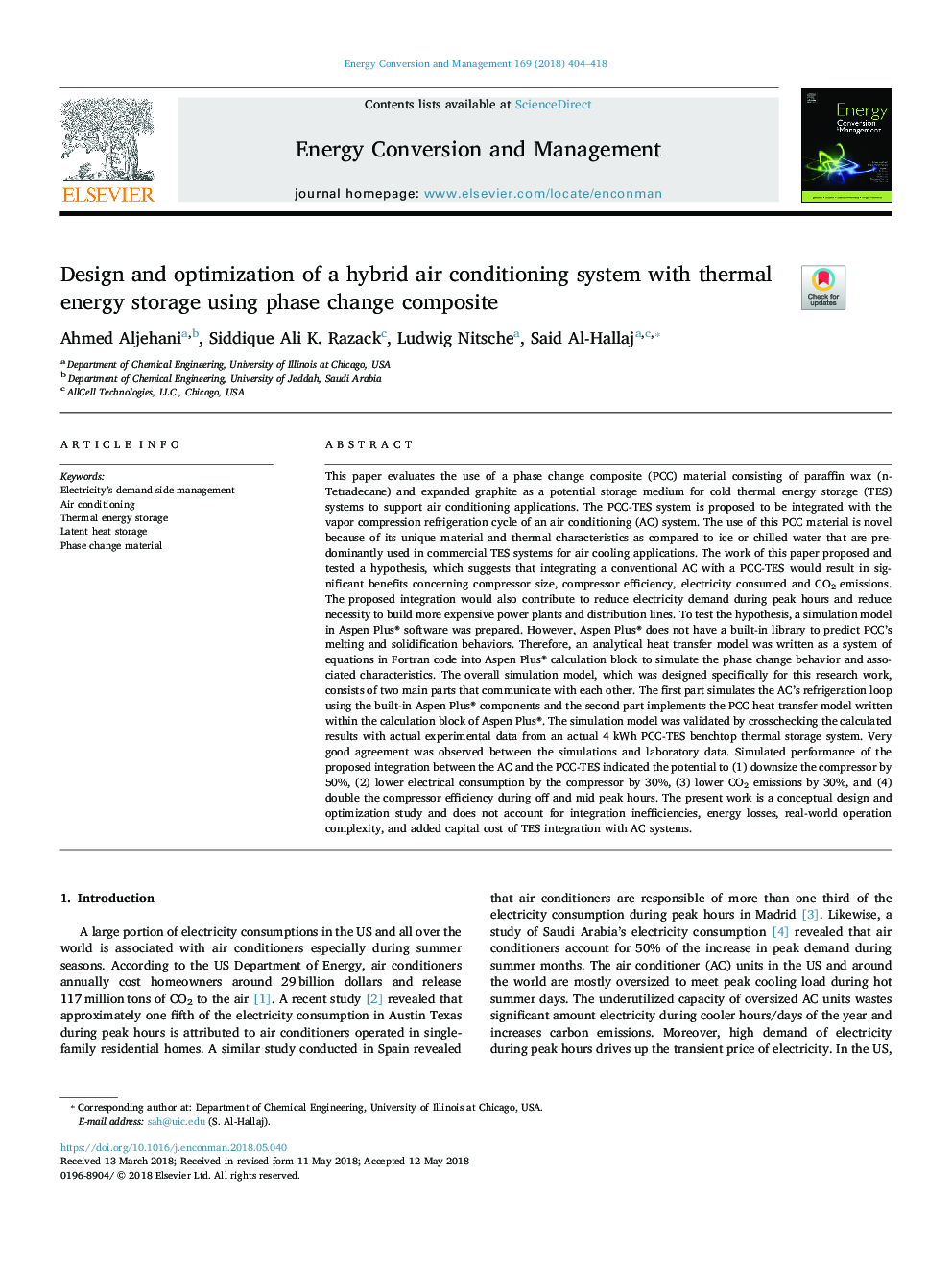| کد مقاله | کد نشریه | سال انتشار | مقاله انگلیسی | نسخه تمام متن |
|---|---|---|---|---|
| 7158140 | 1462793 | 2018 | 15 صفحه PDF | دانلود رایگان |
عنوان انگلیسی مقاله ISI
Design and optimization of a hybrid air conditioning system with thermal energy storage using phase change composite
ترجمه فارسی عنوان
طراحی و بهینه سازی یک سیستم تهویه مطبوع هیبریدی با ذخیره انرژی حرارتی با استفاده از ترکیب کامپوزیت فاز
دانلود مقاله + سفارش ترجمه
دانلود مقاله ISI انگلیسی
رایگان برای ایرانیان
کلمات کلیدی
موضوعات مرتبط
مهندسی و علوم پایه
مهندسی انرژی
انرژی (عمومی)
چکیده انگلیسی
This paper evaluates the use of a phase change composite (PCC) material consisting of paraffin wax (n-Tetradecane) and expanded graphite as a potential storage medium for cold thermal energy storage (TES) systems to support air conditioning applications. The PCC-TES system is proposed to be integrated with the vapor compression refrigeration cycle of an air conditioning (AC) system. The use of this PCC material is novel because of its unique material and thermal characteristics as compared to ice or chilled water that are predominantly used in commercial TES systems for air cooling applications. The work of this paper proposed and tested a hypothesis, which suggests that integrating a conventional AC with a PCC-TES would result in significant benefits concerning compressor size, compressor efficiency, electricity consumed and CO2 emissions. The proposed integration would also contribute to reduce electricity demand during peak hours and reduce necessity to build more expensive power plants and distribution lines. To test the hypothesis, a simulation model in Aspen Plus® software was prepared. However, Aspen Plus® does not have a built-in library to predict PCC's melting and solidification behaviors. Therefore, an analytical heat transfer model was written as a system of equations in Fortran code into Aspen Plus® calculation block to simulate the phase change behavior and associated characteristics. The overall simulation model, which was designed specifically for this research work, consists of two main parts that communicate with each other. The first part simulates the AC's refrigeration loop using the built-in Aspen Plus® components and the second part implements the PCC heat transfer model written within the calculation block of Aspen Plus®. The simulation model was validated by crosschecking the calculated results with actual experimental data from an actual 4 kWh PCC-TES benchtop thermal storage system. Very good agreement was observed between the simulations and laboratory data. Simulated performance of the proposed integration between the AC and the PCC-TES indicated the potential to (1) downsize the compressor by 50%, (2) lower electrical consumption by the compressor by 30%, (3) lower CO2 emissions by 30%, and (4) double the compressor efficiency during off and mid peak hours. The present work is a conceptual design and optimization study and does not account for integration inefficiencies, energy losses, real-world operation complexity, and added capital cost of TES integration with AC systems.
ناشر
Database: Elsevier - ScienceDirect (ساینس دایرکت)
Journal: Energy Conversion and Management - Volume 169, 1 August 2018, Pages 404-418
Journal: Energy Conversion and Management - Volume 169, 1 August 2018, Pages 404-418
نویسندگان
Ahmed Aljehani, Siddique Ali K. Razack, Ludwig Nitsche, Said Al-Hallaj,
